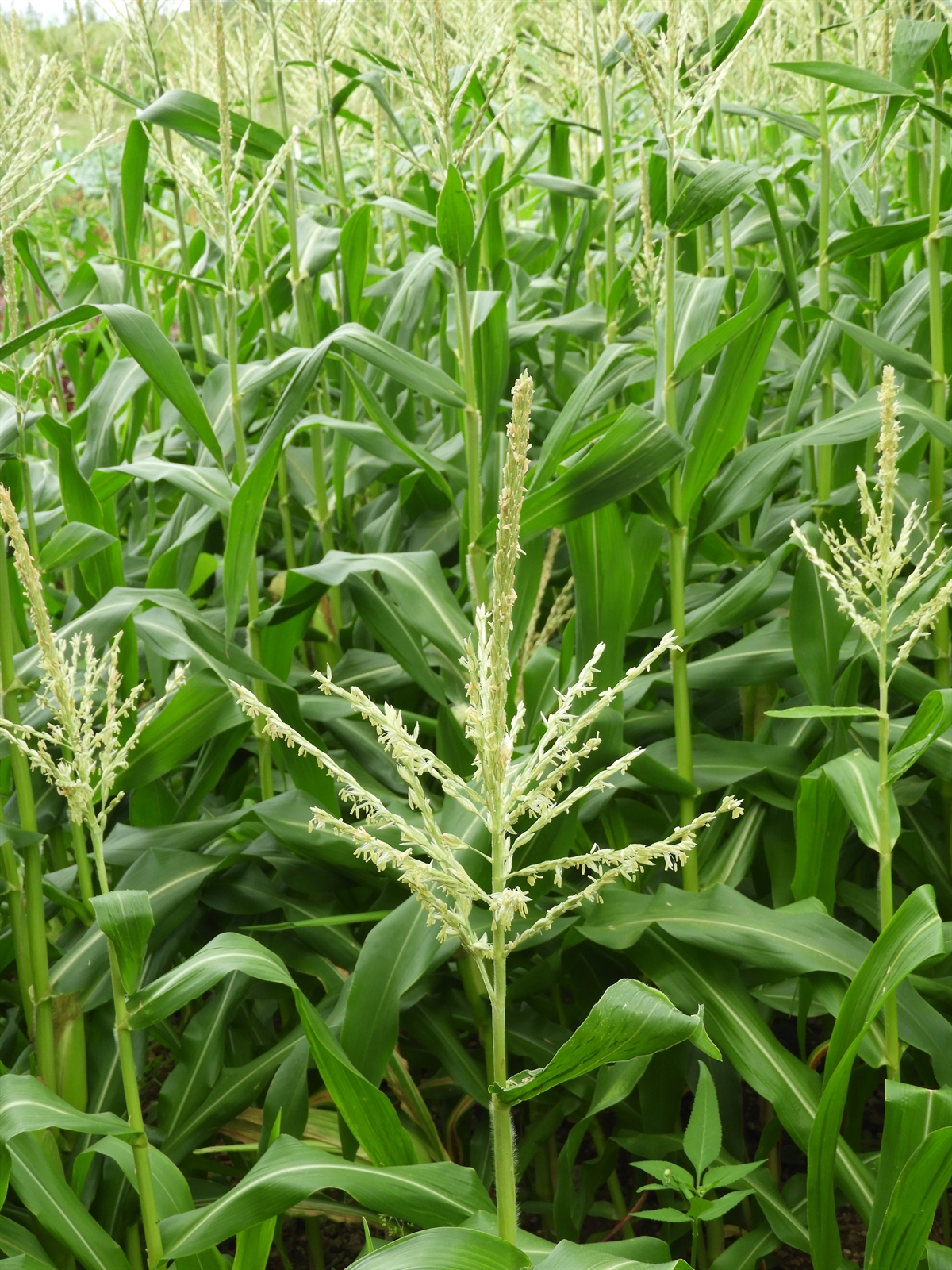Habit: Zea mays grows as clumping perennial to 2 m in height when flowering. The leaves are arranged alternately to 25 cm in length (usually shorter) with a basal sheath extending along the stem that is slightly pubescent. At the point of divergence of the leaf sheath to the leaf blade is a ciliate ligule. The leaves are parallel veined and slightly pubescent.
Zea mays is monoecious. The staminate flowers are arranged in a panicle of 10-20 racemes made of appressed spikelets at the top of the plant. The carpellate flowers are in a spike in leaf axils. At the base of each spikelet are 2 structures called glumes. The first glume small and the second larger. In each spikelet there are flowering structures each is subtended by 2 additional structures (lemma and palea). The fruit is a caryopsis.
Habitat: Zea mays grows in Human Altered environments (farms and gardens).
Distribution: Zea mays is NOT native to the Lucayan Archipelago. It is native to Mexico and northern Central America. It is grown now throughout the world.
Medicinal/Cultural/Economic usage: Zea mays is not known to be used medicinally in the Lucayan Archipelago.
The fruits are edible.


